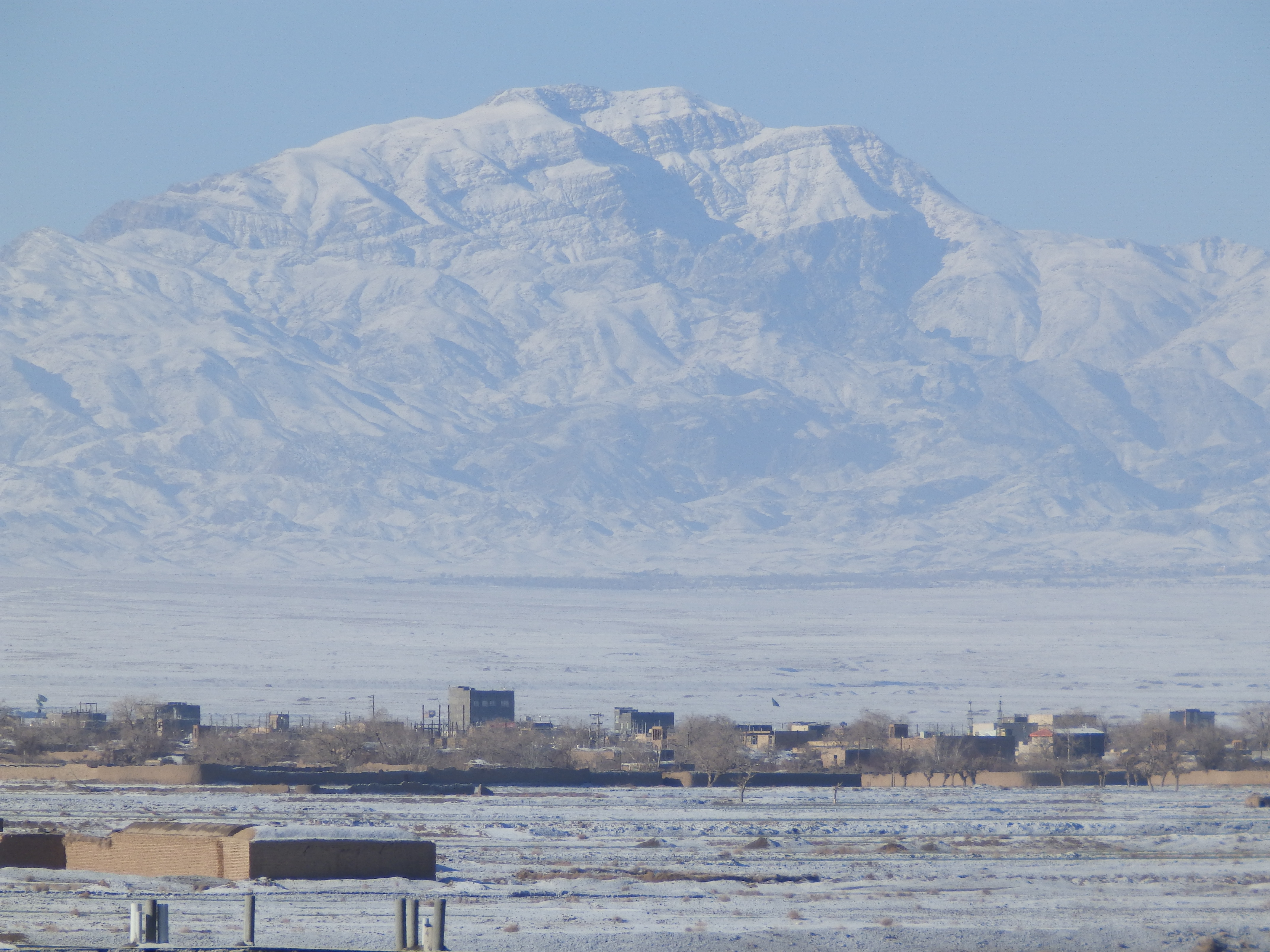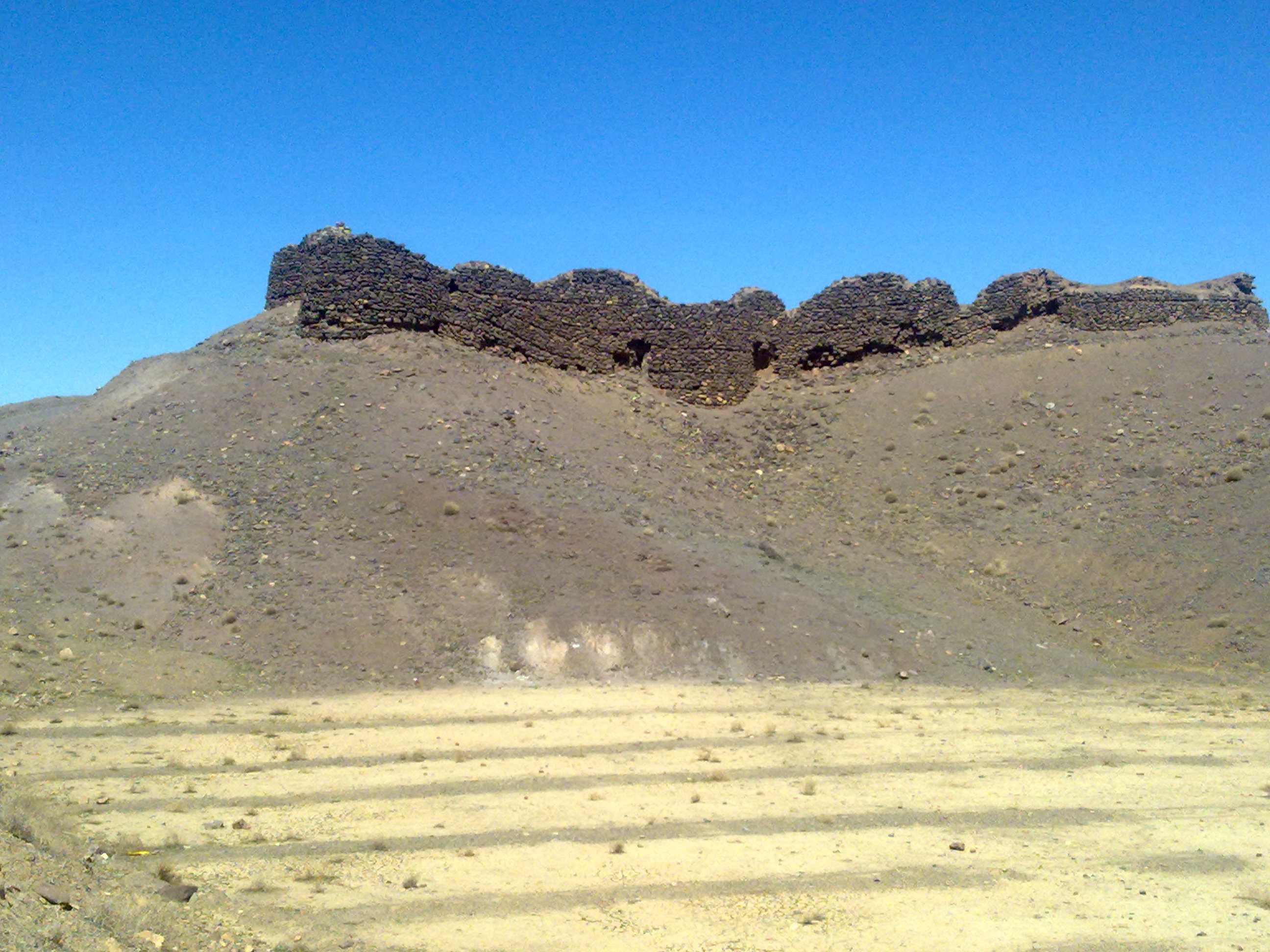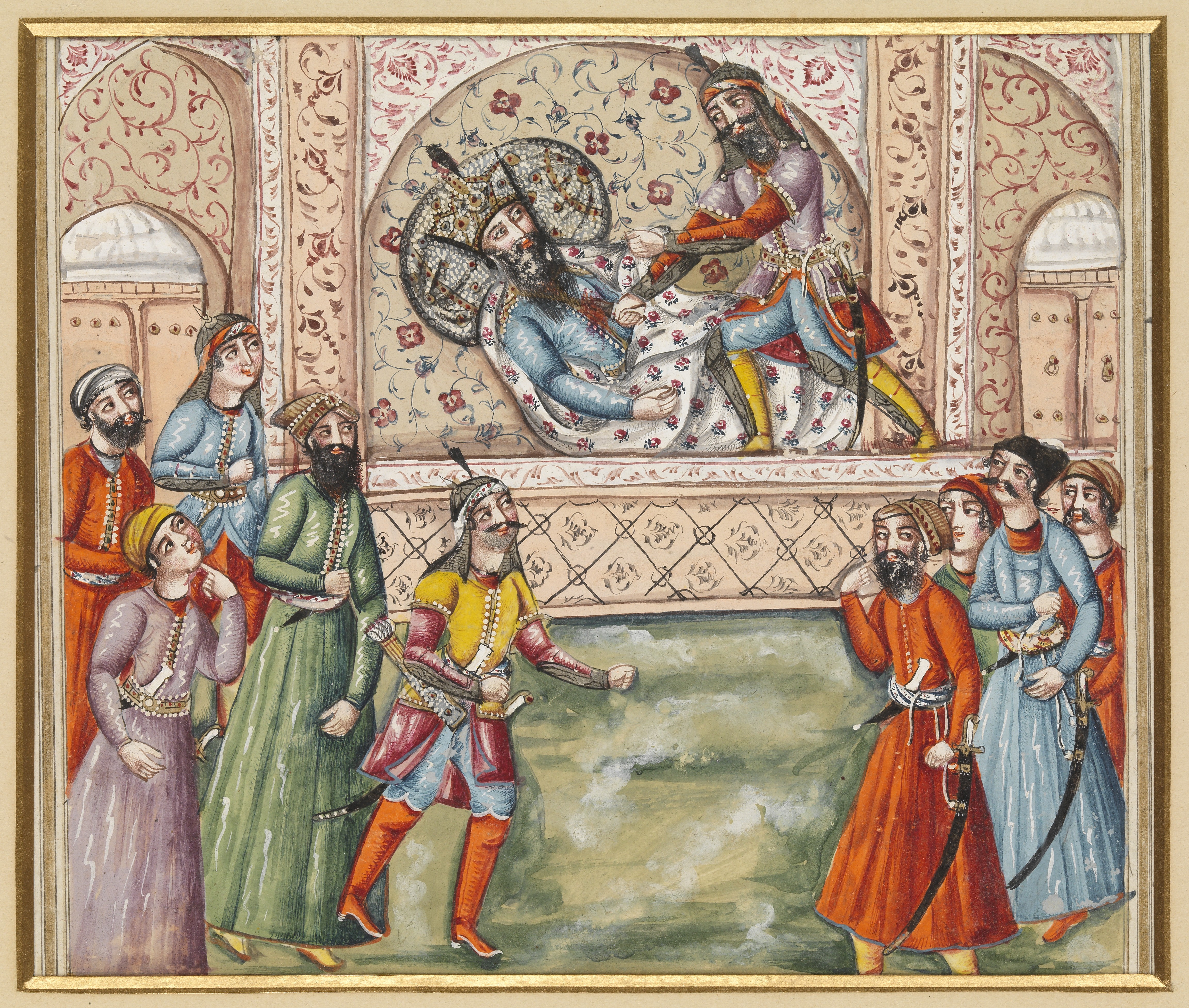|
Davazdah Rokh
Davāzdah Rokh ( fa, دَوازدَه رُخ) (Twelve combats) is a story in Shahnameh. This relatively long story (almost 2,500 verses) is described as one of the finest stories of Shahnameh in terms of "plot, dramatic description, and insight into human nature". It takes place in the border of Iran and Turan, where a number of Iranian heroes fight with a number of Turanian heroes. In all cases, Iranian heroes defeat their Turanian competitors. Goudarz is the chief of Iranian heroes and Piran Viseh is the chief of Turanian heroes. The battle begins when Piran's brother, Houman, challenges the Iranians and is killed by Bizhan in a single combat. The two armies then fight together but the war has no winner. Finally they agree on pitched battles ('' mard o mard'') between the heroes of the two army: Heroes of the two army # Fariburz vs Golbad Viseh # Giv vs Goruye Zereh # Gorazeh vs Siamak the Turanian # Foruhal vs Zangolah # Rohham vs Barman # Bizhan vs Rooyin # Hojir vs Sep ... [...More Info...] [...Related Items...] OR: [Wikipedia] [Google] [Baidu] |
Shahnameh
The ''Shahnameh'' or ''Shahnama'' ( fa, شاهنامه, Šāhnāme, lit=The Book of Kings, ) is a long epic poem written by the Persian poet Ferdowsi between c. 977 and 1010 CE and is the national epic of Greater Iran. Consisting of some 50,000 "distichs" or couplets (two-line verses), the ''Shahnameh'' is one of the world's longest epic poems. It tells mainly the mythical and to some extent the historical past of the Persian Empire from the creation of the world until the Muslim conquest in the seventh century. Iran, Azerbaijan, Afghanistan, Tajikistan and the greater region influenced by Persian culture such as Armenia, Dagestan, Georgia, Turkey, Turkmenistan and Uzbekistan celebrate this national epic. The work is of central importance in Persian culture and Persian language, regarded as a literary masterpiece, and definitive of the ethno-national cultural identity of Iran. It is also important to the contemporary adherents of Zoroastrianism, in that it traces th ... [...More Info...] [...Related Items...] OR: [Wikipedia] [Google] [Baidu] |
Zange-ye Shavaran
Zangay-i Shavaran () is an Iranian hero at the time of Kay Khosrow. His fame is in relation to Wife Siyavash Jawira. After Siyâvash death, Iranians did not know about Siyavash family in Turan. Only two Iranians knew of Siavash and Jawira marriage, and Zangay-i Shavaran and Bahram were both. The story of Zangeh In Kay Khosrow first attack on Turan, was commander of the Tous Corps, and he moved the Corps out of Farud territory. And Farud was the Keikhosro vector but the governor of Afrasiab Afrasiab ( fa, ''afrāsiyāb''; ae, Fraŋrasyan; Middle-Persian: ''Frāsiyāv, Frāsiyāk'') is the name of the mythical king and hero of Turan. He is the main antagonist of the Persian epic Shahnameh, written by Ferdowsi. The mythical king ....Farud and Kay Khosrow never met, and Farud was killed in the attack. When Charam was surrounded by Iranians at the center of the Farud government, Farud came to his mother Javiera. And he told his mother how to identify myself with the Iran ... [...More Info...] [...Related Items...] OR: [Wikipedia] [Google] [Baidu] |
Greater Khorasan
Greater Khorāsān,Dabeersiaghi, Commentary on Safarnâma-e Nâsir Khusraw, 6th Ed. Tehran, Zavvâr: 1375 (Solar Hijri Calendar) 235–236 or Khorāsān ( pal, Xwarāsān; fa, خراسان ), is a historical eastern region in the Iranian Plateau between Western and Central Asia. The name ''Khorāsān'' is Persian and means "where the sun arrives from" or "the Eastern Province".Sykes, M. (1914). "Khorasan: The Eastern Province of Persia". ''Journal of the Royal Society of Arts'', 62(3196), 279-286.A compound of ''khwar'' (meaning "sun") and ''āsān'' (from ''āyān'', literally meaning "to come" or "coming" or "about to come"). Thus the name ''Khorasan'' (or ''Khorāyān'' ) means "sunrise", viz. " Orient, East"Humbach, Helmut, and Djelani Davari, "Nāmé Xorāsān", Johannes Gutenberg-Universität Mainz; Persian translation by Djelani Davari, published in Iranian Languages Studies Website. MacKenzie, D. (1971). ''A Concise Pahlavi Dictionary'' (p. 95). London: Oxford Univers ... [...More Info...] [...Related Items...] OR: [Wikipedia] [Google] [Baidu] |
Iran
Iran, officially the Islamic Republic of Iran, and also called Persia, is a country located in Western Asia. It is bordered by Iraq and Turkey to the west, by Azerbaijan and Armenia to the northwest, by the Caspian Sea and Turkmenistan to the north, by Afghanistan and Pakistan to the east, and by the Gulf of Oman and the Persian Gulf to the south. It covers an area of , making it the 17th-largest country. Iran has a population of 86 million, making it the 17th-most populous country in the world, and the second-largest in the Middle East. Its largest cities, in descending order, are the capital Tehran, Mashhad, Isfahan, Karaj, Shiraz, and Tabriz. The country is home to one of the world's oldest civilizations, beginning with the formation of the Elamite kingdoms in the fourth millennium BC. It was first unified by the Medes, an ancient Iranian people, in the seventh century BC, and reached its territorial height in the sixth century BC, when Cyrus the Great f ... [...More Info...] [...Related Items...] OR: [Wikipedia] [Google] [Baidu] |
Gonabad
Gonabad ( fa, گناباد , also Romanized as Gonābād; also known as Gūnābād; formerly Janābaz) is a city and capital of Gonabad County, in Razavi Khorasan Province, Iran. At the 2011 census, its population was 36,367, in 10,389 families. It is mostly well known because of the Gonabadi Dervishes and for its qanats, also known as kareez. It is one of the most important producers of saffron in Iran. Other agricultural products include: Grape, Pistachio and pomegranate. The shrine the Ni'matullāhī Gonabadi dervish order is located in Beydokht, a village in the Gonabad county. History The famous ancient war of Davazdah Rokh had happened between Iran and Turan (Central Asia) in this city on the Zibad Castle. The construction of this city is attributed to the Achaemenid kings and during the Seljuk Empire and Khwarazmian dynasty periods (fifth to seventh centuries AH) it was Shahrabadi. Geography and weather conditions The city of Gonabad is located in the south o ... [...More Info...] [...Related Items...] OR: [Wikipedia] [Google] [Baidu] |
Zibad Castle
Zibad Castle is one of the four historical monuments of Zibad, Iran, located in the Kakhk district of Gonabad County, in the Razavi Khorasan Province. It is believed to be the last refuge of Yazdegerd III, whose death signaled the collapse of the Sasanian Empire and the conquest of pre-Islamic Iran. In 2001, the castle was registered as a national heritage property. Zibad Castle has also been nationally registered under the name of Shahab Castle since 2002. Last shelter of the last Sasanian emperor In 651, Yazdegerd III was defeated by the Muslim Arabs in the city of Gonabad in the province of Merv. His heavy Sasanian cavalry was too sluggish and systematized to contain them; if he had employed lightly-armed Arab or East Iranian mercenaries from Khorasan and Transoxiana he would have been much more successful. Shortly after this, Yazdegerd III was murdered, leaving several different and contradictory narratives about his death. One source reports he sought refuge wi ... [...More Info...] [...Related Items...] OR: [Wikipedia] [Google] [Baidu] |
Shahnameh
The ''Shahnameh'' or ''Shahnama'' ( fa, شاهنامه, Šāhnāme, lit=The Book of Kings, ) is a long epic poem written by the Persian poet Ferdowsi between c. 977 and 1010 CE and is the national epic of Greater Iran. Consisting of some 50,000 "distichs" or couplets (two-line verses), the ''Shahnameh'' is one of the world's longest epic poems. It tells mainly the mythical and to some extent the historical past of the Persian Empire from the creation of the world until the Muslim conquest in the seventh century. Iran, Azerbaijan, Afghanistan, Tajikistan and the greater region influenced by Persian culture such as Armenia, Dagestan, Georgia, Turkey, Turkmenistan and Uzbekistan celebrate this national epic. The work is of central importance in Persian culture and Persian language, regarded as a literary masterpiece, and definitive of the ethno-national cultural identity of Iran. It is also important to the contemporary adherents of Zoroastrianism, in that it traces th ... [...More Info...] [...Related Items...] OR: [Wikipedia] [Google] [Baidu] |
Kai Khosrow
Kay Khosrow ( fa, کیخسرو) is a legendary king of Iran of Kayanian dynasty and a character in the Persian epic book, ''Shahnameh''. He was the son of the Iranian prince Siavash who married princess Farangis of Turan while in exile. Before Kay Khosrow was born, his father was murdered in Turan by his maternal grandfather Afrasiab. Kay Khosrow was trained as a child in the desert by Piran, the wise vizier of Afrasiab. His paternal grandfather was Kay Kāvus, the legendary Shah of Iran who chose him as his heir when he returned to Iran with his mother. The name Kay Khosrow derives from Avestan 𐬐𐬀𐬎𐬎𐬌 𐬵𐬀𐬊𐬯𐬭𐬀𐬎𐬎𐬀𐬢𐬵𐬀 ''Kauui Haosrauuaŋha'', meaning "seer/poet who has good fame". In Avesta In Avesta, Kay Khosrow has the epithet of 𐬀𐬭𐬱𐬀 𐬀𐬌𐬭𐬌𐬌𐬀𐬥𐬄𐬨 𐬛𐬀𐬒 𐬌𐬌𐬎𐬥𐬄𐬨 "arša airiianąm dax́ iiunąm", meaning "stallion of the Aryan lands". According to Avesta, Kay Khosro ... [...More Info...] [...Related Items...] OR: [Wikipedia] [Google] [Baidu] |
Afrasiab
Afrasiab ( fa, ''afrāsiyāb''; ae, Fraŋrasyan; Middle-Persian: ''Frāsiyāv, Frāsiyāk'') is the name of the mythical king and hero of Turan. He is the main antagonist of the Persian epic Shahnameh, written by Ferdowsi. The mythical king and hero According to the ''Shahnameh'' (''Book of Kings''), by the Persian epic poet Ferdowsi, Afrasiab was the king and hero of Turan and an archenemy of Iran. In Iranian mythology, Afrasiab is considered by far the most prominent of all Turanian kings; he is a formidable warrior, a skilful general, and an agent of Ahriman, who is endowed with magical powers of deception to destroy Iranian civilization.Yarshater, E., "Afrasiab", ''Encyclopædia Iranica'' - digital library; accessed January 18, 2007. He is brother to Garsivaz, and the son of Pashang. According to Islamic sources, Afrasiab was a descendant of Tūr (Avestan: ''Tūriya-''), one of the three sons of the Iranian mythical King Fereydun (the other two sons being Salm and ... [...More Info...] [...Related Items...] OR: [Wikipedia] [Google] [Baidu] |
Kay Khosrow
Kay Khosrow ( fa, کیخسرو) is a legendary king of Iran of Kayanian dynasty and a character in the Persian epic book, '' Shahnameh''. He was the son of the Iranian prince Siavash who married princess Farangis of Turan while in exile. Before Kay Khosrow was born, his father was murdered in Turan by his maternal grandfather Afrasiab. Kay Khosrow was trained as a child in the desert by Piran, the wise vizier of Afrasiab. His paternal grandfather was Kay Kāvus, the legendary Shah of Iran who chose him as his heir when he returned to Iran with his mother. The name Kay Khosrow derives from Avestan 𐬐𐬀𐬎𐬎𐬌 𐬵𐬀𐬊𐬯𐬭𐬀𐬎𐬎𐬀𐬢𐬵𐬀 ''Kauui Haosrauuaŋha'', meaning "seer/poet who has good fame". In Avesta In Avesta, Kay Khosrow has the epithet of 𐬀𐬭𐬱𐬀 𐬀𐬌𐬭𐬌𐬌𐬀𐬥𐬄𐬨 𐬛𐬀𐬒 𐬌𐬌𐬎𐬥𐬄𐬨 "arša airiianąm dax́ iiunąm", meaning "stallion of the Aryan lands". According to Avesta, Kay Kh ... [...More Info...] [...Related Items...] OR: [Wikipedia] [Google] [Baidu] |







